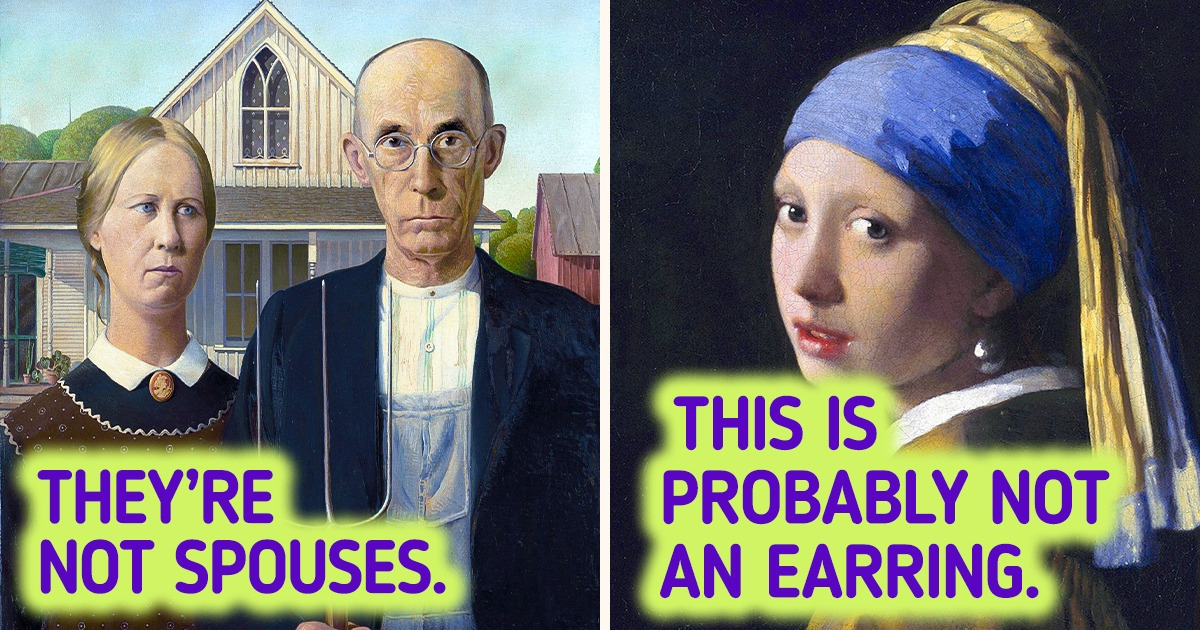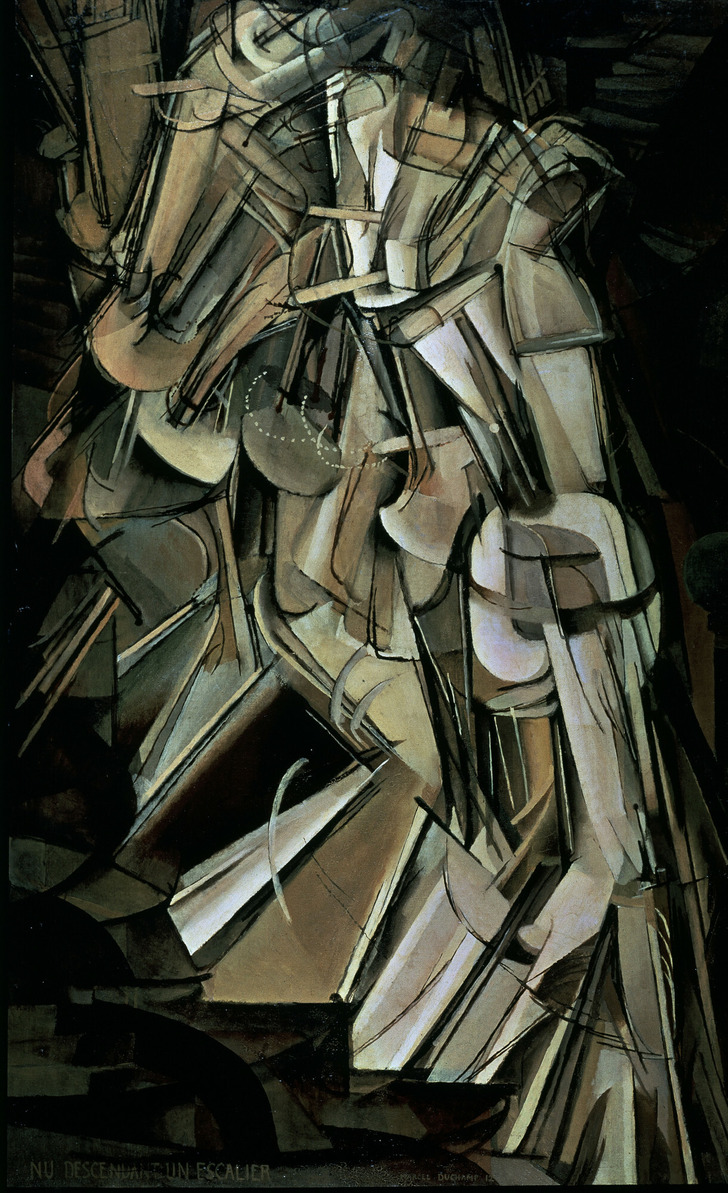My Son Banned Me From Seeing My Grandkids, So I Finally Taught Him the Lesson He Needed


Many famous paintings have an exciting creation story, but it is usually known only to a small group of people, like historians or fine art experts. So, today, we would like to share a few fascinating stories that hide behind some of the most famous paintings with you.
The piece was painted in the seventeenth century and had many titles, including Portrait in Antique Costume, uncommonly artistic. The title that we know today was first used not so long ago.
Some researchers are still unsure whether the girl’s earring in the painting is actually a pearl. One of the possible materials from which the earring was made is metal. Moreover, they can’t even tell whether it’s an earring because it doesn’t have a hook. But this is not all. In 2018, a new study showed that the painting’s background hasn’t always been black. The artist painted the girl in front of a green curtain.
Nighthawks is one of the most recognizable paintings in American art. But the thing is that its original name was different. The artist’s wife kept a journal about her husband’s creative work, and she mentioned in her notes that the original name was Night Hawks. Perhaps, it was a reference to the beak-shaped nose of the man at the bar.
Many believe that the couple depicted in this painting is a husband and wife. But, in fact, they are a father and a daughter. Wood’s sister and their dentist modeled as the figures. Grant Wood also asked his sister to wear an apron that was common among girls living in the rural area of Iowa at that time.
When Wood entered the painting in a competition at the Art Institute of Chicago, one of the judges deemed it a “comic valentine.” But still, the painting won the bronze medal and was bought by the same Art Institute. It’s also worth mentioning that Iowans were furious at their depiction as pinched and grim-faced people.
Vincent van Gogh often used a starry sky in his paintings, but this one was special. Even though he didn’t sign the painting, it’s undoubtedly his work because he described it in detail in the letters to his sister. This is the first painting where he used a starry background, but after that, he painted a few other works that featured a sky filled with stars. In Café Terrace at Night, the constellations are depicted with such fidelity that scientists were able to precisely date the creation of the painting to September 16-17, 1888.
Also, even though the artist depicted a night sky in his painting, he didn’t use the color black at all. There were only blue, purple, and green shades.

This Marcel Duchamp painting is considered a modernist classic. But when it was created, it was rejected by the Cubists as being too Futurist. It was even ridiculed at an art exhibition. One of the visitors said, “There is in my bathroom a really good Navajo rug which, on any proper interpretation of the Cubist theory, is a far more satisfactory and decorative picture.”
This painting was painted during the Industrial Revolution, when there was a massive shift from an agrarian economy to machine manufacturing. However, the artists of that time thought industrial images were not good enough to be depicted in paintings. So the fact that J. M. W. Turner chose such a topic for his painting proves that he was ahead of his time because he showed industrial progress as something beautiful and fascinating.
Even though almost everything in the painting is made fuzzy to show the power of speed, you can see a hare running along the track. Perhaps the artist suggested that new technology could become dangerous for nature and humanity in the future.
The Kiss can be considered the artist’s last chance to save his reputation. Earlier, Klimt completed a series called the Vienna Ceiling Paintings at the University of Vienna’s great hall, but the public perceived them as shameless. The artist even had to borrow money to repay his commission to Vienna’s Ministry of Education, so he was taking a real risk when he started painting his new work of art. But the Belvedere Museum of Vienna admired the painting so much that they bought it even before it was finished. At that time, it was the highest sum ever paid for a painting.
View of Toledo is the first Spanish landscape painting of its time. Some researchers suggest that this is not an entire painting but a part of it. However, there’s no evidence of this. Even if there were other parts, they’ve never been found. By the way, if you compare the actual city with the painting, you’ll see that not all landmarks correspond to the real city landscape. Perhaps the artist wanted to show the future of Toledo.
Georgia O’Keeffe finished this drawing in 1915 while teaching at a university and researching abstract art. At the time, artists were more prone to paint geometric shapes, so she focused on natural forms and dedicated an entire series of drawings to them.
Later, she sent these drawings to her friend, who took them to a gallerist. He found them to be the “purest, finest, sincerest things that had entered his gallery in a long while,” and he exhibited some of her drawings without O’Keeffe’s permission. After discovering her work was on display, she confronted the gallerist but eventually agreed to let the exhibit continue.
Giuseppe Arcimboldo created a few portraits by painting an assemblage of different objects or foods. His paintings are deemed a “triumph of abstract art in the sixteenth century.” The work has been interpreted as a satirical mocking of book collectors who are more interested in acquiring books than reading them.
The original name of the painting is unknown, and its current title first appeared only in an early twentieth-century inventory.
Art experts first doubted that the author of the painting Lady with an Ermine was Leonardo da Vinci because his signature was added to the painting much later than it was created.
Only recently, experts scanned the painting with a multispectral camera to see what it initially looked like. They found out that it went through significant changes during sloppy restoration work. The background, for example, wasn’t black originally but deep blue. But scanning confirmed that the author of the painting is, in fact, Leonardo da Vinci because they found his fingerprints on it.
Do you know any other paintings that seem mysterious to you?











